Configuring Windows Firewall for DCOM and OPC on Windows 7/2008
3. Configuring the Windows 2008 and Windows 7 firewall for DCOM and OPC
The DCOM technology the OPC technology is based on uses reserved system port 135 for its work. For servers and clients to run normally, you should permit these connections in your firewall. If the client and the server are located on different computers, firewall configuration is required. Below you can see an example of configuring the standard firewall in Windows 2008. If the client and the server are used on one computer, there is no need to configure the firewall.
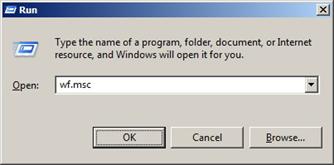
Fig. 11 Access to the computer or server management console
For Windows 7 users. To open the firewall management console, use "Start" - "Control Panel" - "System and Security" - "Windows Firewall" - "Advanced settings" or run it from the command line with the "wf.msc" command.
For Windows 2008 Server users. To open the firewall management console, you may use the "The server management console" or run it from the command line with the "wf.msc" command.
3.1 Permitting DCOM activity
By default, Windows blocks inbound connections from other computer. For OPC clients to be able to connect to OPC servers on this computer, enable the corresponding rule.
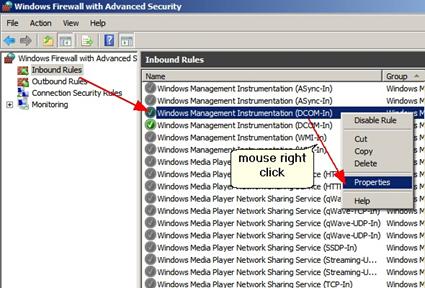
Fig. 12 Firewall rule properties
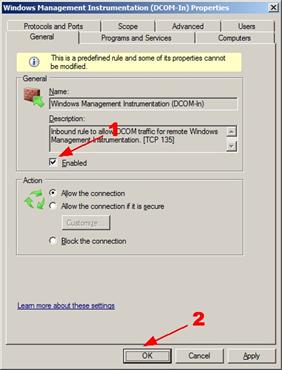
Fig. 13 Permitting DCOM activity
For Windows 7 users. If the "COM+ network access" or "DCOM" rule is not in the list, create two "Port" rules.
- Port 135 rule for the TCP protocol;
- Port 135 rule for the UDP protocol;
3.2 Creating rules for every OPC server
You need to permit activity for every OPC server running on this computer. Also, you should permit network activity for the OpcEnum system service that allows remote clients to receive the list of servers from this computer.
Below you can see an example of how to create a rule for OpcEnum. Rules for other applications are created in a similar way.
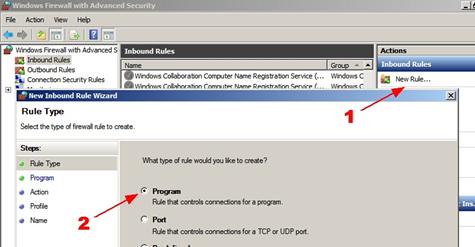
Fig. 14 Adding an individual rule
- Select the "New Rule" action;
- Select the "Program" rule type;
- Click the "Next" button.
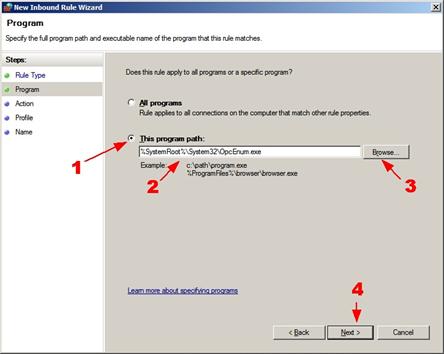
Fig. 15 Selecting the file
- Select the "Program Path" option;
- Specify the full path to the program and its file name;
- You can select the program on the disk using the "Browse" button;
- Click the "Next" button.
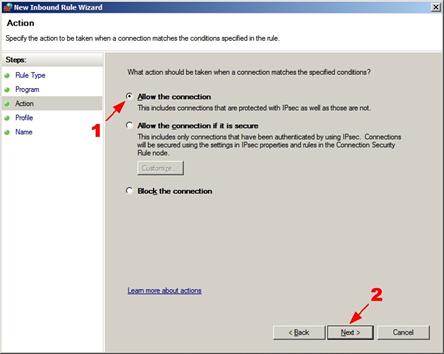
Fig. 16 Rule properties
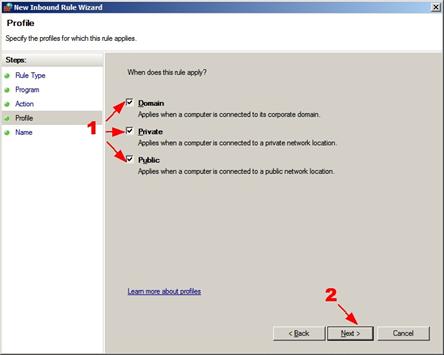
Fig. 17 Active profiles
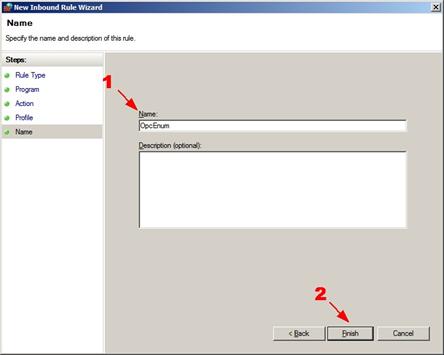
Fig. 18 Rule name
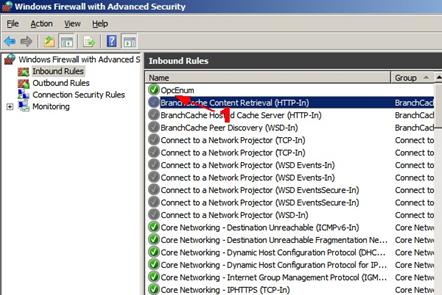
Fig. 19 Active rules
You should repeat these steps to create a rule for every OPC server.
Related articles: Configuring Windows Firewall for DCOM and OPC on Windows 7/2008
OPC and DCOM Configuration on Windows 2008 and Windows 7
- Part 1. Installing OPC Core Components.
- Part 2. OPC and DCOM Configuration. Creating a user and giving access permissions.
- Part 3. Configuring the Windows 2008 and Windows 7 firewall for DCOM and OPC.
- Part 4. DCOM Configuration. Dcomcnfg.
- Part 5. OPC and DCOM Configuration. Typical problems and solutions.
Related topics: Advanced OPC Data Logger
hereOPC Logger RS232 pinout and signals Cables and signals Data monitor cables